
Column文化遺産コラム
Archaeologists’ work in focus: Understanding and transferring ancient technology to future generations
04.03.2019
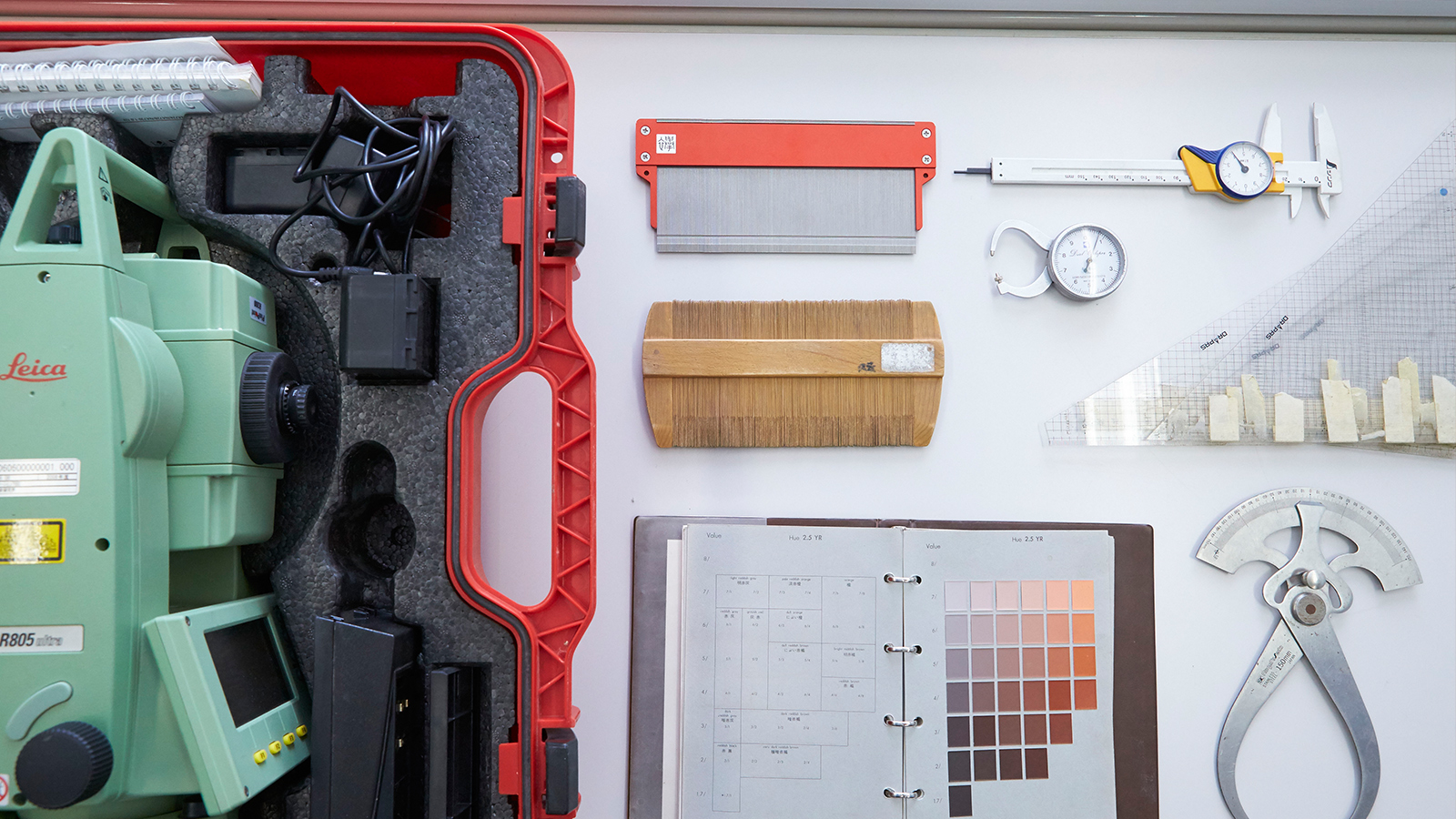
When you picture an archaeologist excavating ancient remains, it seems like such a romantic job, but, in actual fact, the work carried out on site involves steady, detailed tasks, repeated over and over again. That’s because the archaeologists don’t want to miss a single piece of precious information that those ruins might provide us, but to record them accurately, and also because they recognize it is the value of those cultural heritage that ensures their protection. The same thing can be said of every fragment of broken pottery, so, this time, we talk to an archaeologist about the drawing process of these pieces of ancient history.
Tool
-
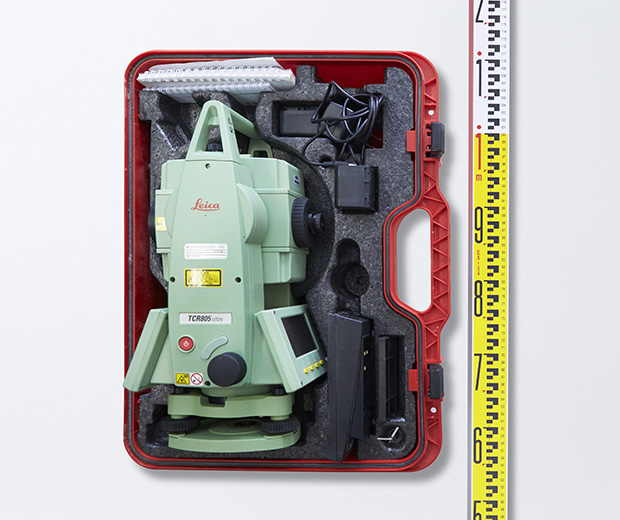
Surveying instruments
-
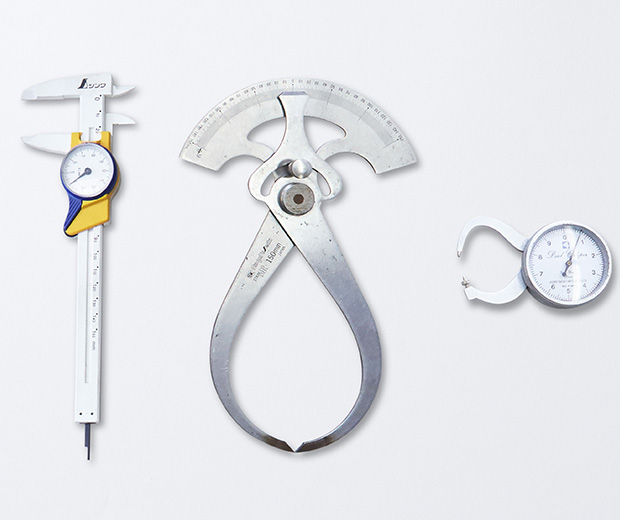
Vernier calipers
-

Ruler
-
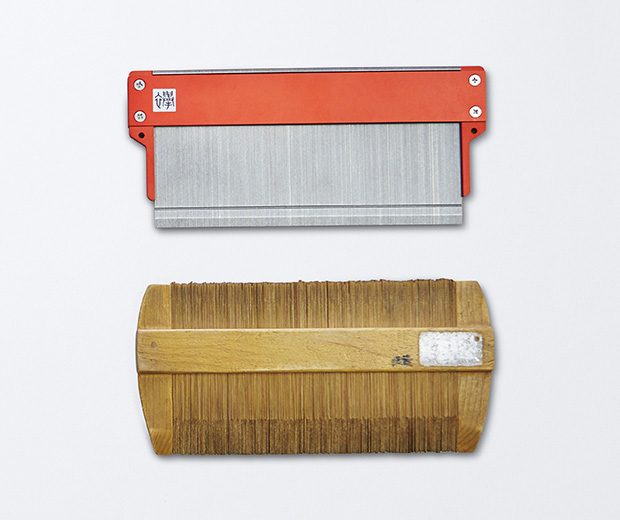
A wooden profile gauge to measure the shape of the artifact (conformateur)
-
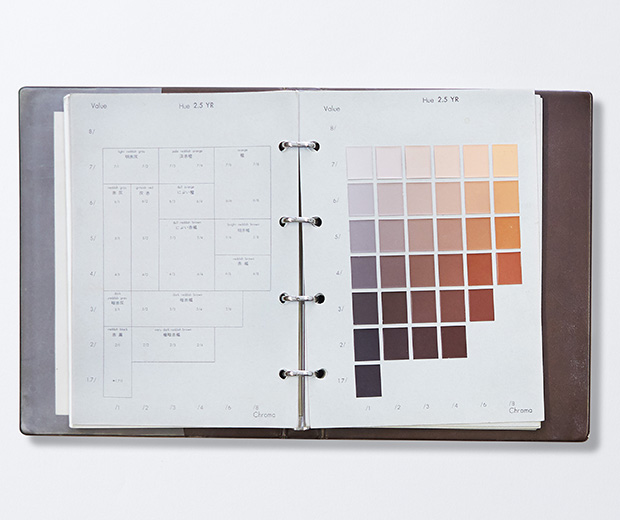
A color chart to match the color of the earth
What's your faborite tool?
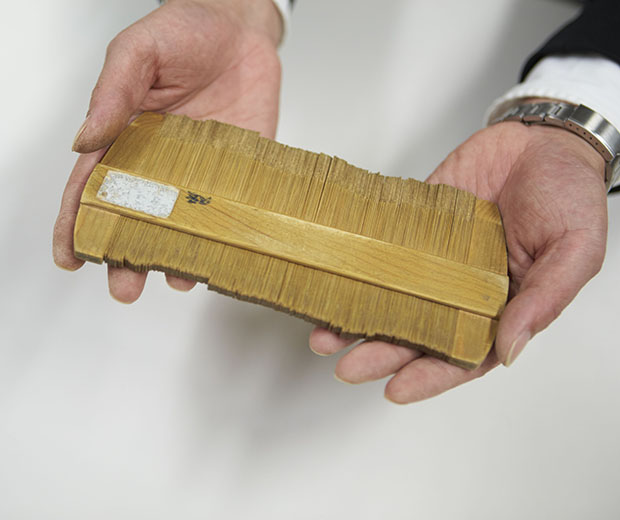
Kume-san likes the wooden profile gauge, called "mako". He bought it when he was a student and has been using it for over 20 years. It was an expensive purchase for a student. After repeated use, it molds easily to his hand, and grows easier to use all the time. The bamboo arc was apparently invented in Japan. The tool itself was undoubtedly designed to ensure it didn’t damage the precious articles it was measuring.
Workflow
We measure and record the precise location where the piece of pottery was unearthed.
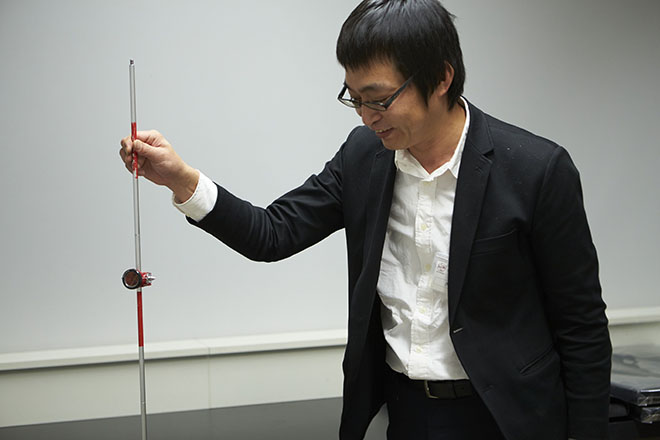
Once something is discovered, the first priority is to create record upon record upon record of every minute detail! First, we use a measuring device to measure exactly where the piece was taken out of the ground and record it on a ground plan of the site. Onsite, we call this “dropping the location.”
We wash the pottery in water and then dry it.
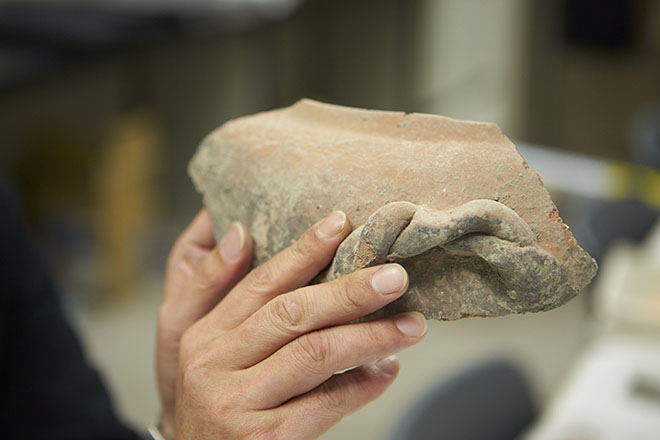
We then wash the pottery in water and dry it in order to check the surface, condition, color and form of the pottery once the soil is cleaned away. This process of numbering each item is called “registration.”
Covert question 1
What attracted you to excavation work?
We record the piece of pottery.
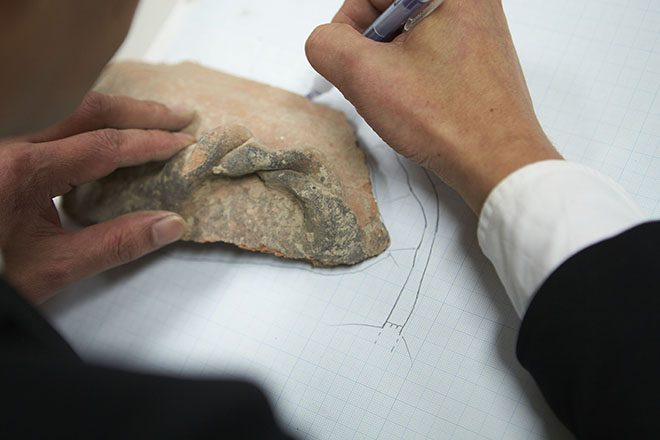
The next stage is to record the pottery from various different angles on paper. First, we observe fragments and calculate exact angles. We take photos of any distinctive pottery, but, most of the time, we create line drawings.
Covert question 2
What sort of people are best suited to excavation work?
We also need a cross-section view.
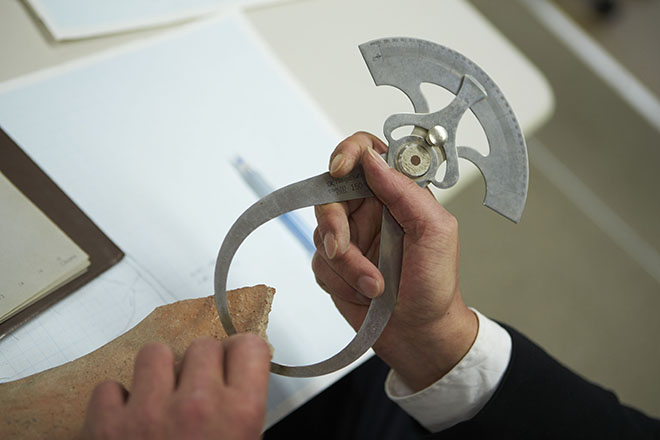
First, we trace the actual piece of pottery. To record a cross-section, we measure the thickness of the pottery using vernier calipers. We feel the pottery to pick up several points where the thickness changes. We usually discover a large amount of clay pots and fragments at any one time, so speed is of the essence. With experience, you come to know instinctively where you need to measure.
Covert question 3
Do you like this kind of task?
We transcribe the shape of the piece using the profile gauge and other tools.
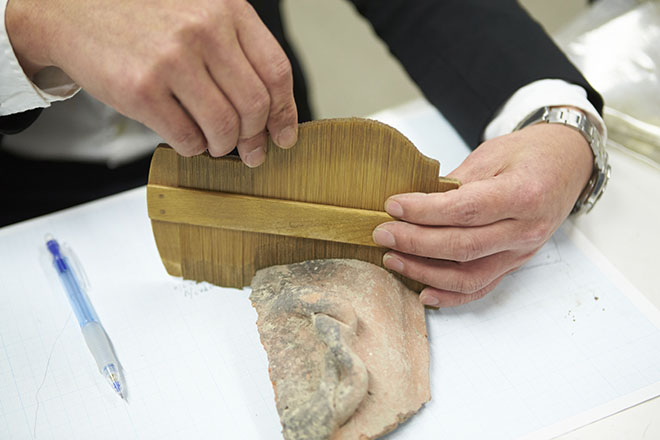
We measure three-dimensional forms with this profile gauge. You use it to gauge the shape of the piece. I think the bamboo conformateur was designed in Japan. If you used a metal object, it could damage the item, but this is a gentler way of handling precious artifacts. We are extra careful when measuring the parts that are vital to ascertaining an artifact’s specific archaeological age.
Covert question 4
Don’t you take photos and 3D scans?
We create supplementary notes on color and other special features.
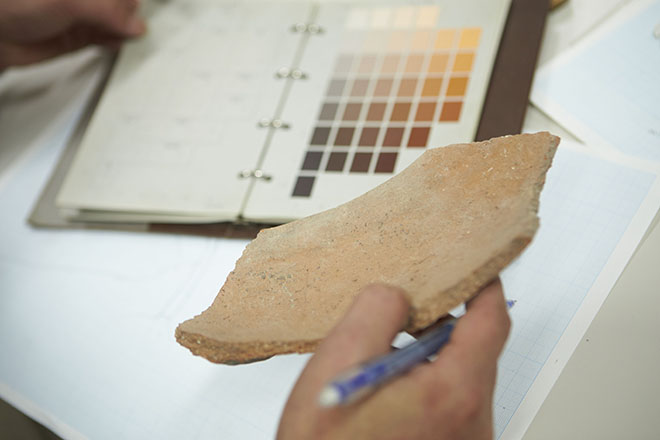
We record the color of the pottery. This is the color chart we use to gauge the color of the earth. Owing to its age, there may be many different colors on the inside and outside of any one piece of pottery, so we record them all by writing for instance, this section is a dark yellow, and this section is light yellow in color.
A real surprise
Is this not too analog?
We scan and digitalize the drawing for inclusion into a complete report.
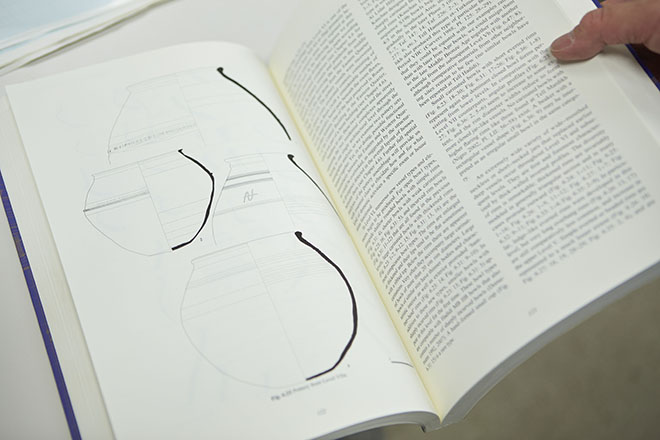
Finally, we scan our handwritten records, and use pen or drawing software for tracing in order to compile a full report like this one. Anyone can understand the excavation conditions and any information about the pottery just by looking at this information. We collect and share this kind of information to help promote the development of archaeological research.
An interesting sidebar
Mistook for a huge discovery!


